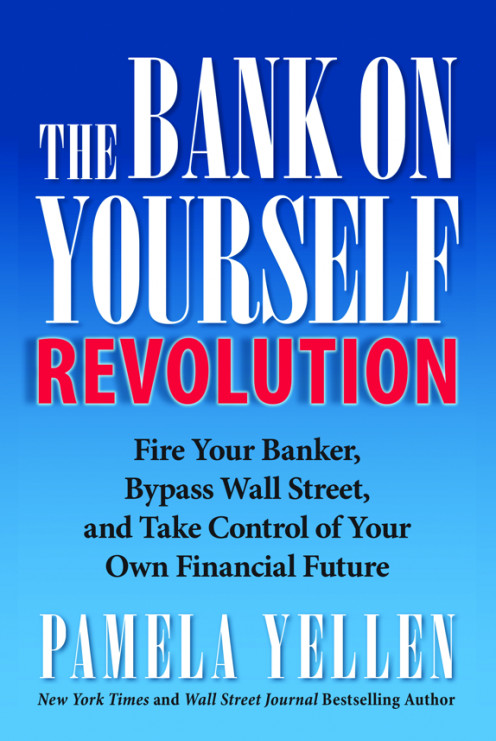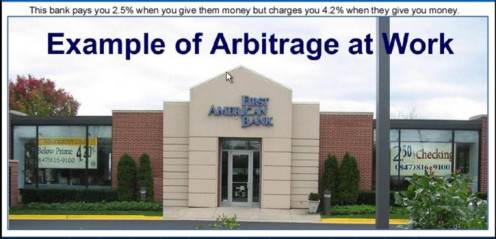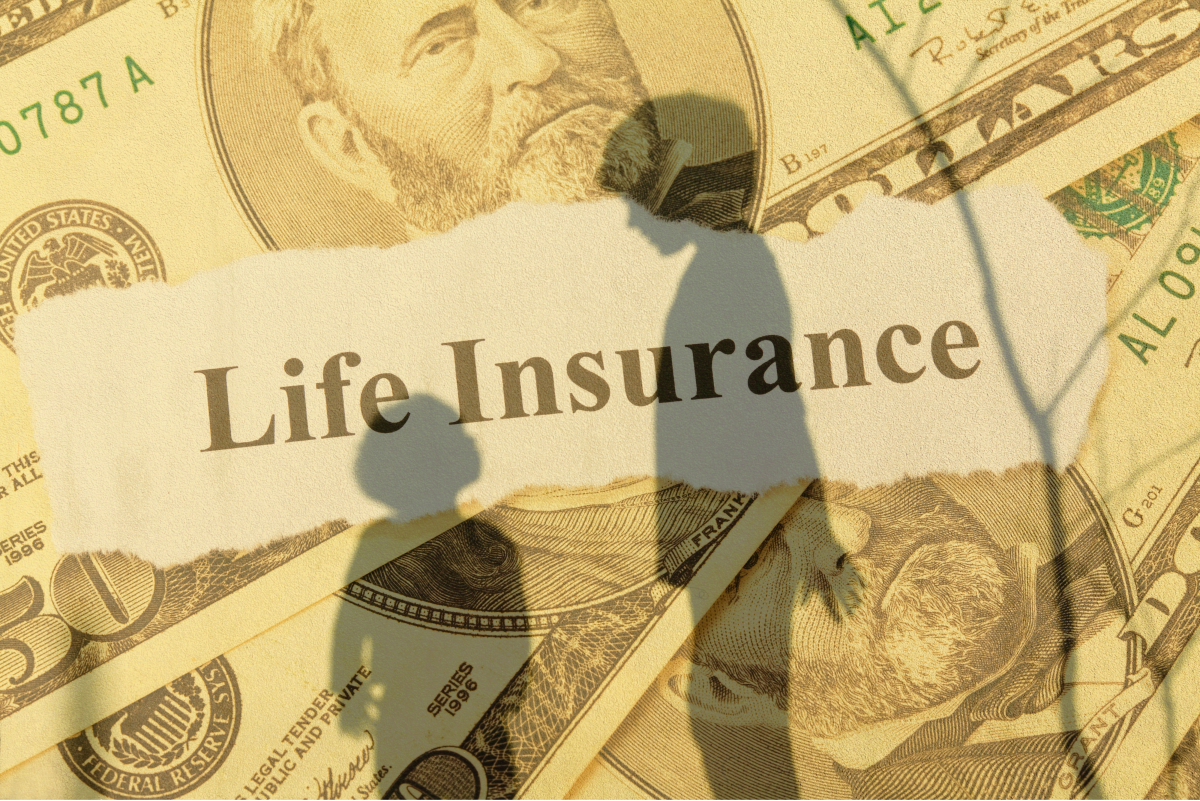The Problem With the "Bank on Yourself" Whole Life Insurance Strategy, What It Is - What It Does - and Alternatives

Is "Bank on Yourself" a legitimate way to build wealth or a Scam?
The purpose of this article is to dive in and discuss whether or not a person can create wealth by borrowing money from a participating whole life insurance policy to make major purchases, like cars or vacations.
Since money in a whole life insurance contract's cash value is the policy owner's money, they have the right to borrow it instead of going to a bank to borrow theirs. By borrowing money from themselves, the idea is they would be paying themselves back any interest the loan accumulates instead of paying interest to a bank. In doing this, the policy owner keeps that money to create wealth for themselves instead of making a bank rich.
In addition, Bank on Yourself states that when money is borrowed "from" a whole life insurance policy, the cash value still earns a rate of return.
Therefore, effectively, the individual is using the money from their cash value life insurance to buy what they want and creating wealth with the same money simultaneously.
Since people generally hate and distrust banks, this sounds awesome! Who wouldn't want the ability to generate a rate of return while also using that money while paying themselves back any interest instead of a bank?
"Bank On Yourself" states the ability of whole life insurance to create wealth by borrowing against it is a "secret benefit" of owning these contracts. The book and the agents who promote the strategy state this "secret" is something banks don't want anyone to know about either because, if they do, it will ruin their business.
I will tell you right up-front that this pitch isn't true! I know this is going to make a lot of life insurance agents who make a lot of money selling these policies mad, but that doesn't change the fact that one simply can not borrow from themselves and become wealthy, no matter how they spin it.
What people are doing instead when they are utilizing this strategy is taking their money out of a very safe environment where their wealth is protected from creditors and lawsuits. Removing money from a life insurance policy is also reducing the leverage they receive to provide death benefits and several other insurance benefits policies provide, and most ironicly, they are reducing the risk to financial institutions. This is ironic because "screwing banks and the financial industry" is an emotional selling point to the 'Bank on Yourself" strategy.
In this article, I will explain why I believe "Bank On Yourself" is an exaggeration of the benefits of whole life. This type of policy has its place in a financial plan but nobody should buy a policy based on this hyped-up sales pitch.
How banks create money - The fractional banking system
"Bank on Yourself" is selling consumers on being their own bank, therefore, I believe, it is necessary to start with some background on how banks create money through the fractional banking system. This way, we can see if a "Bank on Yourself" life insurance policy is really making money for the contract owner or just playing a shell game with the owner's money.
Fractional banking is the practice of how banks lend out more money. The system allows banks to lend out far more money than they actually have available to them and charge interest on those loans to generate profits.
Here's how it works:
Say a bank has $100 in deposits. That is all the money they have right now.
Under the fractional banking system, that bank can lend out $90 of that $100 charging interest to make money on that loan.
This $90 loan is eventually deposited into the bank too, allowing the bank to lend another $81 out and, of course, charge interest against the loan...
Then this $81 is deposited into the banking system, and the bank can again lend out $72...charging interest.
This continues until there are about $10 in loans for every original $1 dollar deposited. This is why people say that "banking is making money out of thin air."
The thinking is that as long as enough people keep their money in the bank to cover withdrawals, the system will work.
This practice allows banks to loan out more money than they would be able to otherwise, and it's one of the reasons why credit is generally so easily available to people who have good credit.
Now that you understand how banks make money with fractional banking let's dive into "Bank on Yourself."

What the Bank on Yourself Method Promises Consumers
Now that you have read about fractional banking let's look at what "Bank on Yourself" promises to customers who do what it suggests.
Before I start, know I have read two books by Pam Yellen - "Bank on Yourself" (2009) and "The Bank on Yourself Revolution" (2014). These books describe the concept of creating a borrowing system through the use of cash value participating whole life insurance.
I have talked to several life insurance agents who promote this method of building wealth, and they claim the concept discussed in "Bank on Yourself" will allow an investor who embraces the concept to:
- "Spend and Grow Wealthy" by placing most of their money into cash value whole life insurance.
- Borrow from the cash value of these policies which will eliminate the need to deal with banks ever again as life insurance policy becomes "a bank."
- Recapture the cost of borrowing because when an individual repays the loans from the life insurance policy, he or she is paying the interest back to themselves.
- With this system the individual can recapture all the costs of buying cars, going on vacations, and sending their children to college instead of sending the interest to the banks. They will be able to increase their net worth and can avoid the need to participate in the stock market to become wealthy and financially independent.
This sounds awesome but, can you really borrow from a life insurance policy, pay the loan back AND make money doing so?
This seems too good to be true! Let's take a look.
The "Secret" product to borrowing from yourself to create wealth - Direct Participation Whole Life Insurance
The product that "Bank On Yourself" claims to allow someone to "spend themselves to wealth" is direct participating whole life insurance which is a policy issued by a mutual life insurance company.
It sounds intimidating, but just know there are several different types of life insurance policies on the market. They all provide death benefit protection, but some policies require a lot more premium when compared to others.
To reduce confusion,I am going to generalize these policies into two distinct types:
Term Life Insurance and Permanent Life Insurance.
Term life insurance allows a policy owner to obtain the highest amount of "death insurance" for the least premium. "Term" refers to a period.
For example, a 40-year-old may want to have coverage of $1,000,000 that last until they are 60 years old. In this case, they could buy a 20-year term life insurance policy, and it might require them to pay about $70/month in premium.
If the insured person is blessed enough to live through the term (which for a 40-year-old is highly likely but not guaranteed), then the insurance company keeps the money paid into the policy. However, if the insured passes away during the term period, then the death benefit proceeds are distributed to the policy beneficiaries.
Permanent life insurance also has a death benefit and is unique in that it is the only type of insurance guaranteed to have a claim if it is kept for the insured's entire life. Because death is a certainty for everyone, permanent life insurance is designed to build equity over time.
"Bank on Yourself" recommends that an investor use a certain type of permanent life insurance policy manufactured by a mutual life insurance company called a non-direct recognition participating whole life policy.
I will break down the meaning of this term in three parts:
- Mutual Life Insurance Company
- Participating Whole Life
- Non-direct (vs. direct) Recognition
Owning a company can be achieved in a few different ways. One of the most understood ways is to invest in a company's stock.
When you buy the stock of a company, you become a partial owner of that company and are entitled to a portion of its earnings as well as the appreciation of the stock you own over time. Of course, you may also lose money if your share of a stock goes down in value, but you will still receive your share of the profits.
You can invest your money into the stock of an insurance company to own a portion of it if you wish. When you do this, the profits you as the shareholder may receive will come from the various life insurance policies these companies sell and the company's management to run a good company.
Mutual Life Insurance
A Mutual life insurance company is different. An investor can't buy shares of a mutual life insurance company. Instead, to be an owner of this form of company, someone needs to buy a whole life insurance contract from them.
Mutual Insurance = Owned by Its Policyowners
Participating Whole Life Insurance
Participating whole life insurance is a policy where the mutual life insurance company's "profits" (considered a surplus of premiums collected to provide benefits to the owner) are returned to the policy owner in the form of dividends. Because these dividends are returns of excess premiums, they are not taxed. This is an important attribute of these policies.
Mutual life insurance companies generate these surpluses by investing the premiums paid into whole life into conservative investment portfolios and establishing other lines of business to consumers, such as annuities or term life insurance they can offer the public, where the profits are used to offset the cost of insurance to the policy owner/company owners.
Some mutual life insurance companies even own Wall Street Firms known as "broker-dealers," and others even have actual banks and mutual funds where the profits these business units make are used to reduce the cost of providing whole life policy owners with coverage.
This is ironic because a big selling point with Bank on Yourself is that by using that system, the individual is avoiding the financial industry. In reality, life insurance companies are an important part of the financial industry, providing trillions of dollars in loans to companies and government agencies.
This takes me to the big selling point of Bank on yourself. That is using Direct Participation Whole Life Insurance to make money.
Direct Recognition Whole Life vs. Non-Direct Recognition Whole Life
The cash value of whole life insurance is always 100% available to the policy owner. One way a policy owner can access their money is through a policy loan.
In a life insurance policy loan, the insurance company lends money to the policy owner from its funds. That loan becomes an asset to the insurance company with which they charge interest to the borrower.
To secure the loan, the insurance company places a lien on the cash value of the life insurance policy. The money in the policy never leaves it, so the owner is never taking money out of their policy and therefore continues to earn the guaranteed rate of return and dividends the policy is entitled to. Over the past two decades, the rate of return the cash value of certain whole life insurance contracts earned has exceeded the amount of interest being charged, creating a type of arbitrage.
If you look back and see how banks make money, they borrow from depositors paying them one interest rate, and lend it to borrowers charging a higher interest rate. When each loan is made and deposited back in the bank, the bank can repeat this process earning interest on the original deposit multiple times.
This dynamic is the comparison Bank on Yourself makes and is the selling point of the strategy.
Direct Recognition Whole Life
In a direct recognition whole life insurance contract, the interest charged to the loan is the same as the declared dividend rate.
Non-Direct Recognition Whole Life
In non-direct recognition whole life insurance, the dividend rate is independent of the loan rate. As interest rates have decreased in the economy, the interest rate charged to a loan has been less than the dividend rate for non-direct recognition policies. This dynamic has Bank on Yourself practitioners showing prospective clients that they can borrow from the policy and still earn money.
This is like someone borrowing from a house at 5% interest while their house grows at 6%. Kind of, but you aren't getting rich doing this.
Here is what is really happening.
1) A policy owner pays premiums with their own money to create a cash value amount in a life insurance policy.
2) When they want to use it, they get a loan for it from the insurance company.
3) The insurance company gives them the loan, charges them interest (thus reducing the total return the policy owner receives), and puts a lien against the policy to guarantee they get their loan back either by:
- The policy owner pays the loan and interest back to the insurance company.
- The insurance company takes the outstanding loan value and accumulated interest out of the cash value if the policy is surrendered.
- The insurance company takes the outstanding loan and interest out of the death benefit if the insured dies.
In reality, the life insurance company is in total control of the loan.
The true leverage happening when someone borrows money against a life insurance policy
On the surface, borrowing at a rate that is lower than what a contract is earning sounds great, and I believe this is a reason that so many people have bought life whole life insurance policies to "become their own bank."
This isn't true, though. Here is what I mean:
What happens to a whole life insurance policy when money is borrowed?
The primary benefits of whole life insurance it's guaranteed cash value growth and the death benefit.
As a policy owner builds cash value, their equity builds in the policy. When they take a loan against it, the policy's death benefit is only reduced by the amount of the loan and not a percentage of the cash balance available. What do I mean/
Imagine you have a $1,000,000 whole life policy with a $250,000 cash value, and you need to borrow half of the cash value or $125,000.
Logically, you might think if you are taking half the cash value, then that would mean you would lose half the death benefit. This isn't the case though.
Instead, if you were to borrow $125,000 from this $1,000,000 policy, the death benefit would be reduced by $125,000. Therefore, the leverage the policy owner receives when they take a loan against a whole life insurance policy is the additional death benefit it provides.
Alternative ways to borrow money better than Bank on Yourself
You could borrow from an outside source for less and make more
Imagine you need to buy a car.
It costs $50,000. To acquire it, you could borrow from yourself through your life insurance policy which has an interest rate of 5% and a dividend rate of 6% (therefore earning a 1% arbitrage.) When you pay the loan back, you are paying the accumulated interest your policy had accessed against it, which is effectively the lost credit it didn't generate if you hadn't taken the loan.
Alternatively, you could borrow from a bank at 5% and keep your own money in the policy, earning the full 6%.
Which one do you choose?
The only correct choice, if it is available to you, is to borrow from an outside lender.
If you can accumulate $50,000 in a life insurance policy, you likely have good credit. If you do not and your life insurance policy is your only alternative, this is a different conversation.
However, by borrowing from an outside source, you not only keep earning the full dividend rate the policy will earn but you also:
- Shift the risk to another lending institution if you cannot pay.
- Still have your own money you can access for any reason you want without the risk of being turned down.
Think about this...
Something happens, and you need money; what do you do?
If you have your money out of your policy tied up in a car, it isn't available for you.
By using a bank for your car, you have access to that cash (even if it may take 6 months.)
Also, when you take money out of a policy, you aren't paying yourself back the interest even if it seems like you are.
What you are really doing is just replacing the interest the policy didn't earn because you took the loan out. Let's face it, and if you didn't take the loan out, the policy would have been credited the full 6% instead of the "1% arbitrage" they are selling you on. Plain and simple, borrowing money from a whole life policy, in this example, cost you 5%.
Add to that; there are no tax deductions for borrowing money from a life insurance policy (business owners - pay attention.) Interest charged on a bank loan has the potential to be deductible (which lowers its cost) in many situations. Loans against life insurance are NEVER tax deductible.
You can see that borrowing from a life insurance policy is probably the last place you should go to get money when you need capital!
Borrow money from an investment portfolio on a "margin loan."
Here is another way to borrow money secured by assets that are more advantageous than borrowing against a life insurance cash value. Take out a margin loan against an investment portfolio.
If you own stocks, bonds, limited partnerships, TIPS, or Business Development Companies in a brokerage account, you can borrow funds against the equity in the account. Just as there is with a loan on a life insurance policy, there aren't any rules or underwriting requirements you have to go through to do this. All you have to do is set up the account, and the brokerage firm will allow you to take loans against it - no questions asked.
Also, just like a life insurance loan, there aren't any payments due when you take a margin loan against an investment account either. Too you can even get a credit card to have that money immediately.
One argument that Bank on Yourself agents have for this loan strategy is that life insurance cash values don't have the investment risk that an investment portfolio does. This is true. Life insurance is not an investment, and it is unique that it has the ability to increase in value without the worry of the cash value declining due to changing market conditions.
A fixed income portfolio can be created that reduces this risk significantly and can be reduced down to the risk in life insurance if CDs, treasuries, and even fixed annuities are used to construct the portfolio.
Like a life insurance company, the investment company places a lien on the portfolio to ensure repayment. The individual investments have the ability to grow in the account even with the loan against them.
At Decision Tree, our platform interest charge is low AND tax deductible against investment earnings. Our custodian puts a lien on your account to protect themselves so there is little risk. The margin rate at the time of my writing was 1.67%. That is much lower than a loan on a life insurance's cash value, direct or non-direct recognition!
Financial Planning Video
Whole Life Insurance Does Have Its Place.
Whole Life Insurance does have its place. It just isn't to have the ability to take loans against the policy regularly under the pretense that by borrowing, you are somehow creating wealth. This is just silly.
It is always best to use the cheapest money available when making a purchase. The cash value of whole life insurance could be the best asset to acquire the money you need, but it isn't always the best option as the book "Bank On Yourself" suggests.
However, the fact that life insurance is contractually guaranteed to have a minimum rate or return as well as have the ability to earn dividends is an appealing attribute. In addition, whole life does have insurance benefits and long-term value that increases the longer it is held.
To be successful financially, an investor needs to be able to have someone who understands how to use all the financial tools that are available to make the best possible financial decision.
The primary benefit of whole life insurance is the death benefit and the policy's ability to create a large pool of money at the death of a policy owner anytime the policy is in force. Whole life insurance does not expire as long as the policy premiums are paid.
It is wise to participate in a comprehensive planning process with a financial planner who understands how all the pieces of your financial life fit together. Investments, insurance, cash flow management, debts, taxes, retirement income sources, available benefits, and estate planning are all considered during the planning process.
If you are looking for the answers that make your life simple, save you time and put you in the best position to succeed financially, do yourself a favor and find someone you trust that can take you through the process and give you insight that will change your life.
There are many reasons to own a cash value policy like whole life insurance. Becoming your own bank just isn't one of them.








